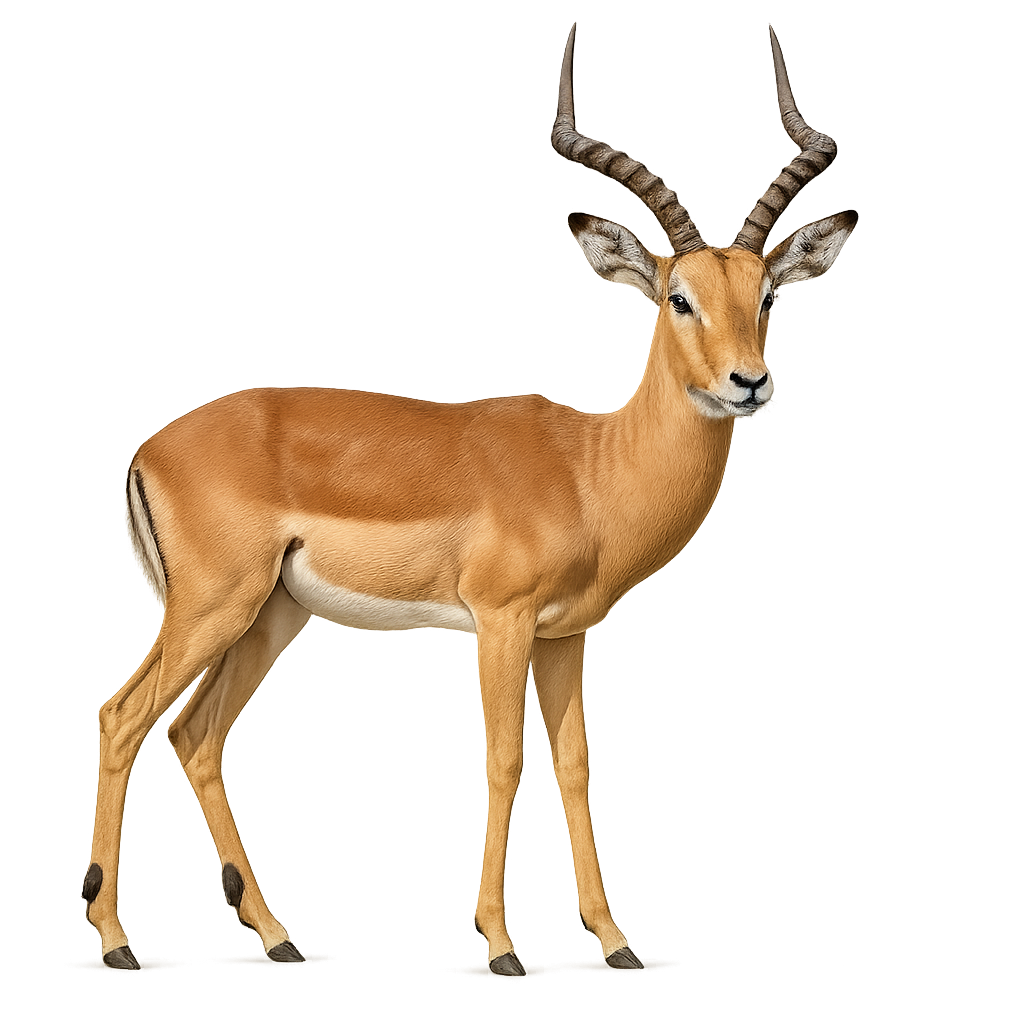Observe and photograph a species in its natural habitat
Learn where and when to observe a species in the wild, how to recognize it in the field, and what habitats it lives in. Get photography tips adapted to its behavior and capture stunning images without disturbing the animal. For full details, open the complete profile in the WildlifePhotographer app.
Impala
Scientific name: Aepyceros melampus

IUCN Status: Least Concern
Family: BOVIDAE
Group: Mammals
Shyness: Suspicious
Safe distance: 50 m
Breeding season / Courtship: 15.05-15.06
Gestation: 6 à 7 mois
Births: 15.11-15.12
Habitat:
Savannas, forest edges, and plains
Description:
The Impala is a medium-sized, slender, and graceful antelope, easily recognizable by its elegant, curved horns and its light brown to reddish coat, with a white belly and tail. It stands about 70 to 90 cm at the shoulder, with a total length of 1.2 to 2 meters, and weighs between 40 and 75 kg. Males have long, fine, lyre-shaped horns that can reach up to 90 cm in length, while females, which lack horns, are generally smaller. The Impala primarily inhabits savannas and woodland grasslands in East and Southern Africa, where it forms complex social groups. It primarily feeds on grass, but may also eat leaves and fruits when grass is less abundant. The Impala is an excellent runner, capable of making long leaps to escape its predators. Although the Impala is quite widespread, it is vulnerable to habitat loss and excessive hunting.
Recommended lens:
>=300 mm
Photography tips:
Approach slowly and discreetly, using a telephoto lens to capture images from a distance, as impalas are often very alert and can quickly move away if disturbed.
Photograph early in the morning or late in the afternoon, when the light is soft, and the impala is more active, often grazing or moving in groups in the savannas or grasslands.
Capture moments of natural behavior: The impala is a graceful animal, often seen jumping or moving in groups. These moments are perfect for dynamic photos.
Be patient and respectful: Impalas are social and alert animals, so stay discreet and wait for moments when they are less on guard to capture natural and impressive photos.
Respect their natural environment. Do not disturb their social or feeding behaviors, and follow local conservation rules to preserve this species and its habitat.
Ready to take action?
Choose your platform and start your free trial today



